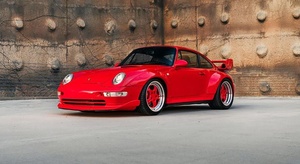First a disclaimer of sorts.... I can't find my other post on this subject.Im too old and dumb.
I researched around the web looking for a pre fabled 3 link kit,set up,or pile of parts and never found one.
We are talking 3 link, NOT torque arm,NOT truck arms,not triangulated 4 link,but......
I found that Ridetech has a triangulated 4 link for the FALCON so I decided I'd just go with that after all Falcon=Comet.....well that's not close to true in the back! Too many details to list,let's just say the mistake $$, was trying to make it fit. So baby with the bath water I'm using the lower axle mount and shock mounts as well as the lower arms and HQ shocks,If a single 3/4" threaded arm is strong enough I'll use those for the upper arm. I'll use a Fays 2 Watts to hold it side to side.
The above is in NO WAY a slam on Ridetech I tried to use one application on a car it was not designed for,totally my fault.
So we come to the dumb questions.
In my reading around Ive found it fairly universal to say in a front engine rear drive car the horizontal CG is roughly the cam shaft height (V8) Let's say 20". Then the 100% anti squat line is drawn from the contact patch of the rear tire to the point the CL of the front tire intersects the HCG Line.
side trip... X= Horizontal,Y Vertical,Z Longitudinal
(front to back)? Have I got that right at least?
In side view,plane view(?) we are only looking at X and Y.
In my research I've read to limit rear steer,or minimize it we want the lower bars fairly long,I'm using the Ridetech lowers at 21.75" and parallel to the ground at ride height OR no more than a 5deg angle up. Front higher than rear.
Now to get anywhere near 100% AS with a parallel to the ground lower the upper arm would have to be angled very steeply down to get anywhere near our 100% line. Being we don't want 100% AS in a hanlding application that's not a problem. Am I anywhere near correct on this up to now?
Again in my "research" I've read anything above 0 to no more than 30% AS seems to be a good compromise . So 0 would be both upper and lower parallel to each other and the ground then from there the upper bar angling down in front to increase AS?
So with the lower effectively "flat" does the upper arm lower/ arm junction stay within my 114" wheel base at 30% AS or end up out in space somewhere in front of the car?
Im thinking my design goal should be a maximum 30%AS with adjustability to 10%.
This is Mainly a road driven Autocross car with a very limited (very) open track capability. In time it may get a roll cage but for now it's going to have chassis bracing that I have found work very well in early Mustangs. Mainly triangle bracing the front aprons and shock towers as well as "jacking rails" and subframe connectors and cross members.
Im working around a 255/40 17 tire squared on a 9.5" wheel. Minor flare. My original goal was a 275 square combo but the front torque box will not allow the wheel angle with a tire that wide. Sounds odd but I don't want to cut the car up (too much more).
As you can tell I'm sure, I need more rule of thumb right now with a few "it works well for me's" tossed in.
Maybe a I would go with at least "this size" upper link as well.
Oh I've had a Watts link on my autocross 68 Mustang for several years so I have a pretty good idea on the effect of rear roll center and roll couple effects. Higher tail happy,lower safer for everybody.
Thanks for reading, I'll try to get a few pictures up as the project moves along.









 Next the rear axle with upper 3 link tacked in place with all but the side gussets in place.
Next the rear axle with upper 3 link tacked in place with all but the side gussets in place.




 Next the axle in what I'll call mock up position ,ride height is most likely an inch high.
Next the axle in what I'll call mock up position ,ride height is most likely an inch high.



















